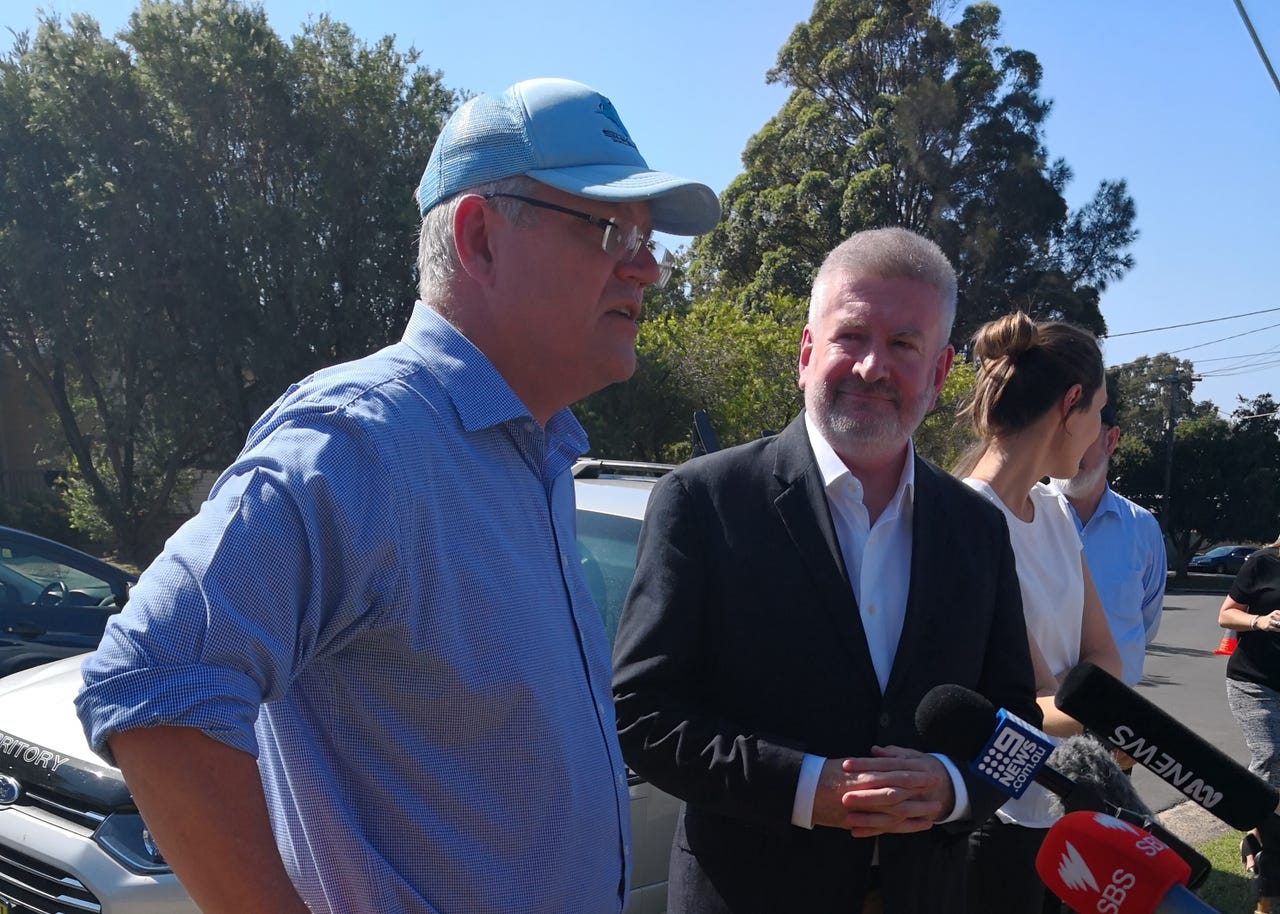NBN expands FttC to 1.5m premises

Australian Treasurer Scott Morrison and Communications Minister Mitch Fifield launch the FttC network
Australia's National Broadband Network (NBN) company has announced that it will be expanding its fibre-to-the-curb (FttC) network footprint by another 440,000 premises.
The additional premises have been taken from its fibre-to-the-node (FttN) and hybrid fibre-coaxial (HFC) footprint, mainly in metro areas.
"The team remains at the forefront of technology developments and continues to innovate to bring the best network to all Australians as quickly and affordably as possible," NBN CEO Bill Morrow -- who is departing the company by the end of the year -- said on Tuesday.
"The flexibility of the multi-technology mix allows us to choose the right technology for each area and deliver the project on time and on budget."
According to NBN, it made the FttN decisions based on considerations of providing minimum wholesale speeds, so that premises with long copper lines have been moved to FttC.
Economic considerations were involved in moving "in-fill and extension" premises slated for HFC, as NBN said it is more cost effective to make use of the existing copper lead-ins than it is to build new HFC lead-ins.
"These premises are inside or adjacent to existing Telstra HFC network coverage but are not able to connect to the Telstra HFC network," NBN explained.
"In line with our strategy of using the most cost-effective and time-efficient technology in any given location, NBN Co will use the existing copper lead-ins to connect these properties to FttC."
NBN had on Sunday launched FttC, switching the 100/40Mbps-capable network on for around 1,000 premises in Miranda, NSW, and Coburg, Victoria -- both of which were originally within the Optus HFC footprint -- that are now able to order an FttC service ahead of a larger footprint release in the second half of this year.
FttC will be made faster to the tune of around 1Gbps upon the launch of G.fast technology by the end of 2018, although NBN chief engineering officer Peter Ryan told ZDNet that G.fast won't be available at all premises in the FttC footprint.
"In order to get the G.fast, we will need to get access to the next generation of the distribution unit, which is the DPU, so where that's in place, we'll be able to offer the G.fast," Ryan told ZDNet on Sunday.
Australian telecommunications technology company NetComm Wireless' new FttC network connection device (NCD) will be used for the network in conjunction with its FttC distribution point unit (DPU).
NetComm's NCD incorporates a G.fast and VDSL modem and is able to monitor and report diagnostics on the performance of the line going into a premises, and includes a reverse-power feed allowing the DPU to be powered via the customer's premises.
NetComm CTO Steve Collins had previously told ZDNet that its NCD brings FttC solutions up to the same point that FttP is at, in that it powers the DPU and provides the modem to the end user, with retail service providers then simply connecting them.
NBN had signed NetComm Wireless to supply its FttC one-port and four-port DPUs and related services in November 2016, initially using old VDSL technology. The contract was as a result of NetComm directly tendering for FttC after NBN specifically asked it to take part, Collins told ZDNet last year.
NBN had in October announced that its first activated FttC premises in Coburg had attained speeds of 109/44Mbps during initial testing across a 70-metre copper line.
NBN commenced building its FttC network in June 2016, starting with a trial of its construction and installation process in Coburg.
NBN had moved 1 million premises from fibre to the node (FttN) and from Optus' "not fully fit for purpose" hybrid fibre-coaxial (HFC) network over to FttC, signing new fibre construction contracts with Fulton Hogan, Downer, and Service Stream in December 2016 covering around 525,000 premises throughout Sydney and Melbourne, "most" of which would be connected by FttC.
NBN also announced relaunching its HFC network for sales as of April 27.
Recent NBN Coverage
Small telcos band together to push for NBN market share
Macquarie Telecom, MNF, Amaysim, MyRepublic, Vocus, Inabox, Southern Phone, TasmaNet, and others have announced banding together to form Commpete, with a goal of attaining 30 percent NBN market share.
Fifield launches 5G paper, 'confident' on NBN HFC optimisation
The Bureau of Communications Research has published a new 5G working paper examining the potential GDP effects, while Comms Minister Fifield has said NBN's remediated HFC will 'deliver a great experience'.
Telstra CEO Penn pushes NBN customer satisfaction
Telstra has announced its new in-home Wi-Fi coverage booster and 30-day NBN satisfaction guarantee, with CEO Andy Penn saying current pricing is 'unsustainable' for retailers.
NBN has launched its fibre-to-the-curb network, with around 1,000 premises in Coburg, Melbourne, and Miranda, Sydney, now able to order services capable of 100/40Mbps speeds.
ACCC wants baby NBNs competing for customers and upgrading networks
When NBN Co is eventually sold off, the ACCC wants it broken into pieces and forced to battle for customers.
Server deployment/migration checklist
One configuration error or overlooked step can send your server deployment off a cliff. This checklist will help you complete the process efficiently and avoid costly mistakes. For a comprehensive look...
NBN CEO Bill Morrow stepping down
Bill Morrow will be leaving the role of NBN CEO by the end of 2018, the company has announced.
